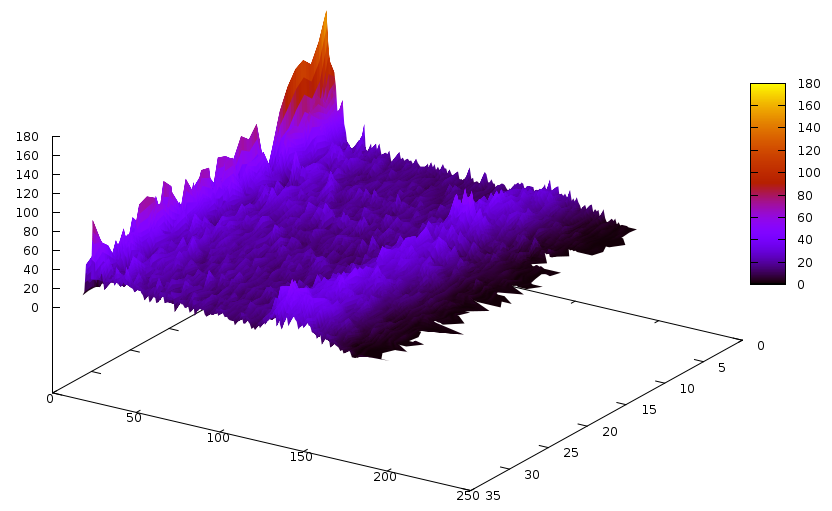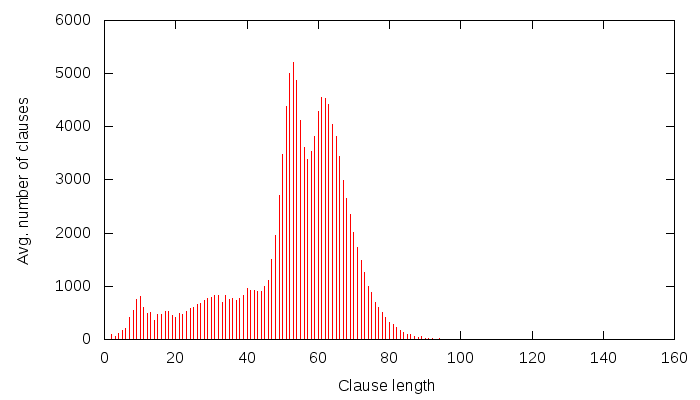 If you have ever wondered how your multi-month SAT problem could be solved, the answer is here: SAT@home by some kind Russian researchers! This idea has been brewing in my head, we even started a mini-project with a friendly American researcher, but we never got it into a working condition :(. It’s great that someone took the time to do it, though. Creating such a setup has some easier and harder parts. Setting up a BOINC server is not that hard, but it needs to run 24/7, which is difficult, unless you are department head at a university or you have a company behind you. Then the scripts need to be written, which is relatively easy to do, but testing and debugging is time-consuming. The really hard part, though, is how to distribute the workload. Treatises could be written on that, and the one above uses the simplest method, that of cutting up the problem along a couple of variables. It’s a good start, I think: starting easy is always the best way to start — the first automobile didn’t try to achieve 300km/h speeds, and it didn’t have to.
If you have ever wondered how your multi-month SAT problem could be solved, the answer is here: SAT@home by some kind Russian researchers! This idea has been brewing in my head, we even started a mini-project with a friendly American researcher, but we never got it into a working condition :(. It’s great that someone took the time to do it, though. Creating such a setup has some easier and harder parts. Setting up a BOINC server is not that hard, but it needs to run 24/7, which is difficult, unless you are department head at a university or you have a company behind you. Then the scripts need to be written, which is relatively easy to do, but testing and debugging is time-consuming. The really hard part, though, is how to distribute the workload. Treatises could be written on that, and the one above uses the simplest method, that of cutting up the problem along a couple of variables. It’s a good start, I think: starting easy is always the best way to start — the first automobile didn’t try to achieve 300km/h speeds, and it didn’t have to.
In the long run, I guess the setups will get more and more complicated, combining many techniques from cutting on variables, to clause sharing with a multitude of clause usefulness heuristics, to sharing parameter usefulness statistics. Workshares themselves could eventually be diversified, some doing ‘simple’ search without resolution, some doing only resolution (and clause cleaning?), some doing only (specific) simplification algorithms such as subsumption or strengthening, some doing data analysis on the current state of the problem such as reachability analysis, number of gates or other higher-level elements such as adders in the problem, etc. In other words, there are many ways to improve this. Maybe even a common interface to such a system could be laid down where different SAT solvers could be plugged in and used without notice.
A friend of mine has once written me a mail describing his work, which essentially talks about paying for a webpage not by looking at adverts, but by running a javascript program. The idea is, of course, that we could write a SAT solver in javascript, and make people run the script by putting it on a well-visited webpage. The server would then distribute SAT problems to the javascripts, which would send some computed data back (like learnt clauses), while the person is surfing the page. Cheap (maybe even free) and essentially unlimited CPU time for hard problems. We could use it to answer some fun math questions, or break some cryptographic systems, for example… just have to find someone crazy enough to write a SAT solver in javascript! :)















